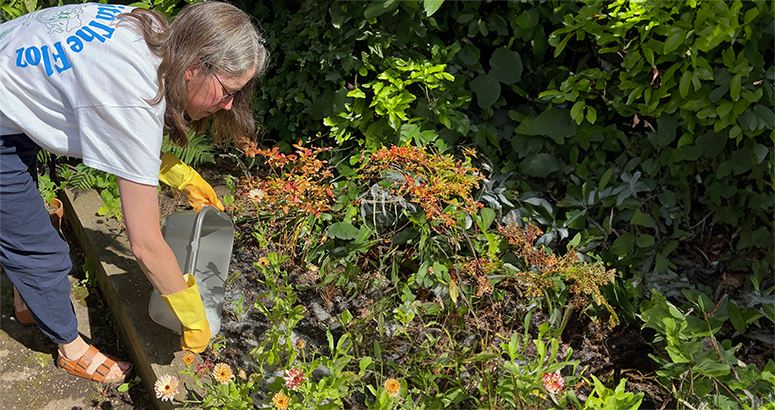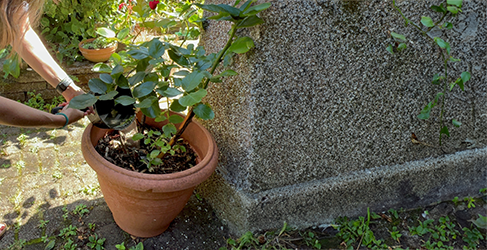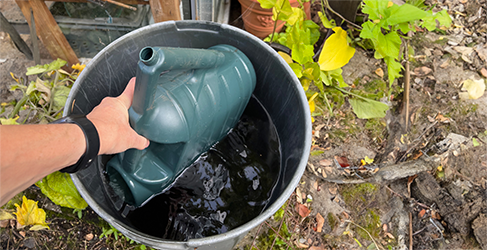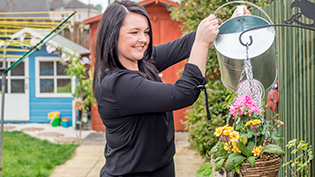BLOG: We can reuse our water to keep our plants healthy - says Julianne Robertson
22 August 2024
In Bloom
Reusing grey water from cooking and washing is a great, sustainable way to keep your plants healthy during long dry spells
What is grey water? It doesn’t sound too appealing, but it can be a great, sustainable way to water the garden and keep your plants healthy, especially during spells of hot weather. Our guest blogger and gardening expert, Julianne Robertson explains what grey water is, how we can reuse it and some vital dos and dont's.
The term ‘grey water’ refers to recycled water - anything which has been already used in the household, for example in the shower, bath or washing up bowl. Broadly speaking, this water is simply clean domestic waste and can be used in the garden in many ways - with some caveats. Soaps and other mild cleaning products like shampoo or washing up liquid are harmless to plants and filtered out by soils and potting compost. However, you should avoid using any water which contains salty detergents, bleach or other strong chemicals.
Where can I collect grey water?
You can use water from the kitchen sink, shower, bath or washing machine; collect it in a basin, bucket, saucepan or any container that’s watertight! Simply carry it outdoors and pour the water around the soil at the base of your plants.
Here are some examples of how to collect grey water instead of watching it go down the drain:
- Use a container to catch the cold water you run off the tap as you’re waiting for it to heat up
- Save any water used to steam or boil vegetables - let it cool and then pour out of the pan into the garden or the pot of a nearby plant
- When you’re cleaning vegetables, place a container in the sink to wash them, or to collect the extra water as you rinse
- Place a bucket in the shower tray to collect the cold water you run off, and some more while you wash
- Don’t dump the dog’s water! When you’re freshening up the bowl for your pet, pour what hasn’t been drunk into a watering can, or straight into the garden.
Where can I use grey water?
Grey water is great for most plants - all kinds of annuals, perennials, shrubs, trees and hedges will benefit from this water and it won’t do them any harm. It’s good for lawns too, although they very rarely need watering unless it’s new turf or freshly germinating grass seed. Using grey water can be a really helpful and sustainable way to keep your plants healthy during a heatwave or when rainfall is very low, without relying on the hose or sprinkler which can waste a lot of water.
However, it’s best NOT to use grey water on fruit, vegetables and salad crops, to avoid food contamination. This is particularly important if it’s possible the water contains any kind of bleach or chemicals - if in doubt, don’t. Grey water is fine to use in beds, borders and potted plants though - simply pour it from a watering can or directly from whichever container you’ve used to collect it!
What about indoor plants?
Grey water can often be used for houseplants too - but not all will appreciate it, and of course overwatering can be detrimental for many, so regularly dumping grey water into the nearest plant pot in the kitchen would be unwise!
Rainwater is generally beneficial for indoor plants, so the first, best option for them is using water from a butt or container kept outdoors. However, there are some houseplants who won’t mind a drink of grey water, including ferns, peace lilies and dracaena.

DO: use grey water for beds, borders, pots and lawns

Do: fill a watering can from the garden water butt
Grey Water Dos and Don’ts
Give grey water a go! It’s easy and safe to save and re-use clean domestic water in your garden, and it could literally be a life-saver for your plants during water shortages.
Just bear in mind a few simple rules and you’ll be ready to reach for the nearest bucket or basin!
Do:
- use water from the kitchen sink, boiled vegetables, shower, bath, tumble dryer condenser or washing machine
- use grey water for beds, borders, pots and lawns
- use it for houseplants, but check their individual requirements first
- use a variety of different containers to avoid a build-up of harmful residues or bacteria
- use a watering can - or pour it straight from the pan, basin or bucket
Don't:
- use grey water on salad or other edible crops that may be eaten raw
- store it - make sure you use within 24 hours
- use grey water exclusively or in the long-term - this can cause a build-up of salt or other harmful dissolved substances which may affect the health of your plants
- use any water which has come into contact with bleach, disinfectant, dishwasher salt or other strong chemical cleaning products








